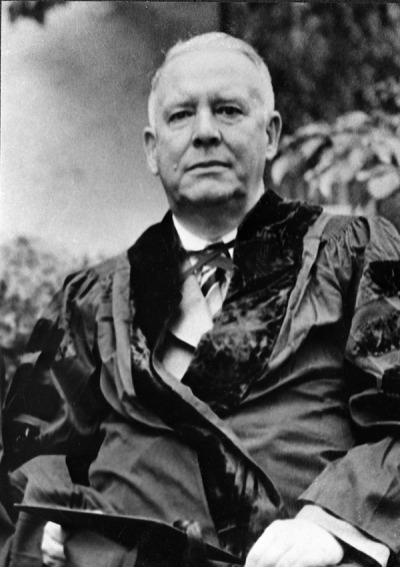
"Melopoeia - Poundian term to describe the kind of poem which induces 'emotional correlations by the sound and rhythm of the speech.' [Pound] stated that the maximum amount of melopoeia is to be found in poems that are written to be sung, chanted or read aloud." - from Glossary of Poetic Terms
"On April 29, 1971, a speaker rose at the University of Connecticut to deliver the eighth annual Wallace Stevens Memorial Lecture. That speaker was not Helen Vendler or Joseph Riddel, both authors of what were even then canonical books on Stevens. It was not a Stevensian poet like Richard Wilbur or John Hollander. It was Louis Zukofsky - the same Zukofsky who is rarely discussed in the same room, let alone the same sentence, as Stevens.
[...]
George Butterick writes that Zukofsky 'welcomed the opportunity to speak on Stevens, that he took the talk very seriously, that when it was pointed out that most of the poets in previous years who had given the 'lecture' actually only read their own poems, or with maybe a few of Stevens' thrown in, that that was quite acceptable - he still preferred to work up a lecture, spent some time the spring of 1971 making notes, etc.' Zukofsky's seriousness casts in a different light what might appear at first to be rather contrived biographical and literary connections between himself and Stevens. When he and Stevens both lived in New York, Zukofsky says, they 'may have walked ... and walked the same streets, past each other unknown.' In 1927 he almost met Stevens when he was interviewed for a job with Stevens' firm, the Hartford Indemnity Accident Company: 'Before leaving I asked the receptionist if Mr. Stevens was in and he went back to ask and Mr. Stevens was away.' Elsewhere in the lecture Zukofsky seems to make sly jokes in which he questions the very idea of influence - his deadpan comment, for example, on his and Stevens' 'use of horses and donkeys throughout our poems.'
[...]
[Zukofsky's] Stevens lecture is packed with such contingencies. Once we understand their appeal to Zukofsky, they begin to seem less contrived and become simply an accurate way of describing his relationship to Stevens - a 'partial coincidence or community of elements between two figures,' but a community that is no less real for being partial. This community of elements, I suggest, extends to areas more significant than the mutual use of horse and donkey imagery. It suggests some surprising general affinities between two American poetic traditions that we usually separate - the 'Imagist-Objectivist' and 'Symbolist' traditions.
[...]
One of Zukofsky's most ardent admirers, Robert Creeley, once praised Stevens for 'always going by the ear.' And that is how Zukofsky's poetry 'goes.' Like Whitman with Monongahela, like Stevens with Pascagoula, so Zukofsky with words like 'clavicembalo': he is interested in the sound of the word. More than any other twentieth-century poet, Zukofsky aspired to return poetry to the condition of music; and music has no 'meaning.' Hence 'A'-7:
Bum pump a-dumb, the pump is neither bumBeside this we might put Stevens' 'Tum-ti-tum, / Ti-tum-tum-tum!' or 'tink and tank and tunk-a-tunk-tunk.' Such openness to linguistic play once led Robert Duncan to place Zukofsky and Stevens side by side as models for 'the addition of the un / plannd for interruption' in poetry.
Nor dumb, dumb pump uh! hum, bum pump o! shucks!
(Whose clavicembalo? bum? bum? te-hum ...
Not in the say but in the sound's - hey-hey -
The way to-day, Die, die, die, die, tap, slow,
Die, wake up, up! up! O Saviour, to-day!
Choose Jews' shoes or whose: anyway Choose! Go!
What compelled Zukofsky, then, were specific features of Stevens' early style, not his thematic concerns or sensibility (both of which could be said, by contrast, to have influenced James Merrill or the 1984 Stevens Memorial Lecturer, John Ashbery). That style changed, of course; but each stage in Stevens' stylistic evolution nevertheless has its own manner, its own limited, definable set of recurring tropes. Because of this Stevens' styles are easily imitated, and they have been assumed not only by Zukofsky but by other poets in the Objectivist line with whom Stevens would seem to share little: Rakosi, Creeley, Charles Tomlinson, Clayton Eshleman. Stevens has served these poets as a kind of stylistic antiself, giving them access to a manner that their tradition finally leads them to reject. Generally, Objectivist poets have loved Stevens and left him. But the fact that one can demonstrate Stevens' importance to poets like Zukofsky and these others should lead us to rethink the relationship between the two traditions that we have learned to call, rather too patly, the Symbolist and the Objectivist. Where the two traditions overlap, as we have seen, is in the area of melopoeia - the area where, as Stevens and Zukofsky often do, the poet can empty the meaning, leaving the song."
- from "Wallace Stevens and Louis Zukofsky" by Alan Golding in Wallace Stevens: The Poetics of Modernism


No comments:
Post a Comment